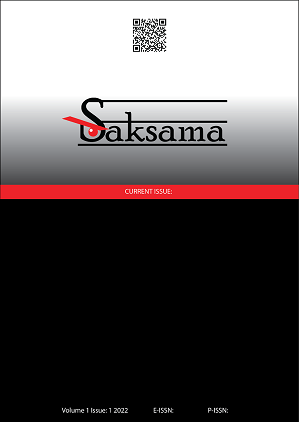EMBRACING THE ABSURD CONDITION OF EXISTENCE IN SAMUEL BECKETT’S ENDGAME CHARACTERS
Main Article Content
Abstract
Article Details
References
Abrams, M. H. (1981). A Glossary of Literature Terms. New York: Holt, Rineheart and Winston.
Beckett, S. (1986). The Complete Dramatic Works. London: Faber and Faber.
Bogdan, R., & Taylor, S. (1975). Introduction to Qualitative Research. New York: Prentice Hall.
Camus, A. (1955). The Myth of Sisyphus and Other Essays, translated by Justin O'Brien. New York: Vintage Books.
Esslin, M. (1969). The Theatre of the Absurd. New York: Doubleday & Company. Inc.
Guba, E., & Lincoln, Y. S. (1981). Effective Evaluation. San Francisco: Jossesey-Bas Publishers.
Guerin, W. (1999). A Handbook of Critical Approach to Literature Second Edition. New York: Haper and Row Publisher.
Henkle, R. B. (1977). Reading the Novel: An Introduction to Technique of Interpreting Fiction. New York: Harper and Row Publisher.
http://samuel-beckett.net/godot_greg.html, accessed on July 7th 2022. (n.d.).
Kuntharatna, N. (2004). Teori, Metode dan Teknik Penelitian Sastra. Yogyakarta: Pustaka Pelajar.
Mckean, E. (2005). The New Oxford American Dictionary Second Edition. New York: Oxford University Press, Inc.
Miles, M., & Huberman, A. M. (1992). Qualitative Data Analysis: A Sourcebook of New Method. USA: Sage Publications.
Robert, E. V. (1989). Fiction an Introducing to Reading and Writing. New Jersey: Pretince Hall Inc.
Subroto. (1992). Penelitian Kwalitatif. Jakarta: Raja Grafindo Persada.
Tyson, L. (2006). Critical Theory Today. London: Routledge Publisher.
Yelland, H. L. (1953). A Handbook of Literary Terms. London: Angus and Robertson.
